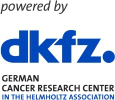Speaker
Description
Although most cells of an organism carry the same genetic content, they show diverse properties, develop distinct functions and form different tissues. This is enabled by gene regulation, the precise timely and spatially controlled activation and repression of genes. However, how cell-type specific transcriptional induction of genes is initiated, is still not fully understood. One factor presumably impacting transcriptional activation are temporally coordinated gains and losses of contacts between gene promoters and distal regulatory elements (DREs). Our lab has recently identified a type of DREs that transiently interacts with gene promoters during transcriptional activation. While these DREs can affect gene activation, the mechanisms remain unknown, limiting our ability to fully understand distal gene regulation.
To close this gap, I will determine the molecular composition of transiently interacting DREs. Since regulatory elements exert their activity via proteins bound to them, I will first focus on their transcription (co-)factor occupancy. For this, I will combine in silico analyses, genomic techniques and temporally-resolved interaction proteomics. Upon determining the TF composition of transient elements, I will assess the effect of the respective factors on gene activation and genome structure using inducible degron technologies. In a final set of experiments, a combination of genetic engineering screens and acute depletion of these TFs will provide insights into their DRE-binding dependence for function.
Preliminary results indicate that transient DREs interacting early during differentiation (2-6 hrs. after induction) display distinct TFBSs compared to their late interacting (24-48 hrs.) counterparts.
This project will reveal the proteome of transient DREs at the time point of their promoter interaction and has the potential to identify candidates important for enhancer-driven gene activation. With the understanding of the processes happening at transient DREs we will ultimately be able to understand the dysregulation of these mechanisms in cancer cells.
| Research type | Basic research |
|---|

